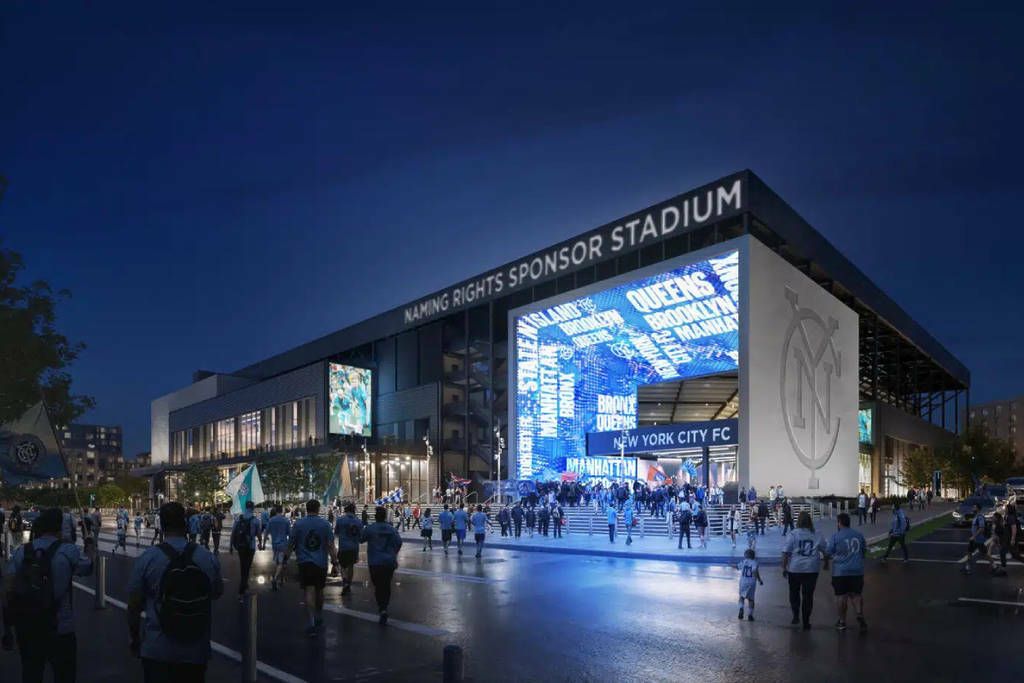
Here is what the first-ever soccer stadium in NYC will actually look like

This is really exciting: Major League Soccer club New York City Football Club has just unveiled new renderings of the much-anticipated new, and first!, soccer stadium set to open in Willets Point in Queens—and it’s looking phenomenal.
Part of larger $780 million project, the arena, which is right next to the home of the New York Mets, Citi Field, is expected to break ground this fall, be completed in time for the 2027 MLS season and boast a capacity of 25,000 spectators.

The new images were released earlier this week alongside a clip that highlights what seems to be the new structure’s main draw: an astounding main entrance that will function as an immersive experience of its own.
Dubbed The Cube, the entryway will be seven stories above street level and it will be lined with 11,000 square feet of LED screens that will effectively function as an experience of its own.
Coming in 2027…
Introducing The Cube: an immersive, seven story front door to New York City’s first-ever soccer-specific stadium.
🏟️ https://t.co/gQnAsZggVA pic.twitter.com/IrH9HpzEU5
— New York City FC (@NYCFC) March 6, 2024
According to MLSSoccer.com, The Cube “will be customized for game day programming as well as art displays and other sights year-round.”
“We want to blow people away,” New York City FC CEO Brad Sims said to the outlet. “You’re at the start of your experience, as you’re entering or you’re walking into the facility. […] You’re going to have a lot of people walking up, and we want this ‘wow’ moment when you’re coming in the stadium, that there really is this fantastic sense of arrival. The Cube, we think it’s unlike anything in any other soccer stadium or any other sports venue that we’ve seen.”

According to previous reports, the Willets Point project will also include over 40,000 square feet of public open space, a 650-seat school, a 250-key hotel, and ground-floor retail shops.
Needless to say, this is all a very big deal that officials are hoping will change the character of the city and, of course, provide financial benefits through an influx of business in the area and, perhaps, tourism.